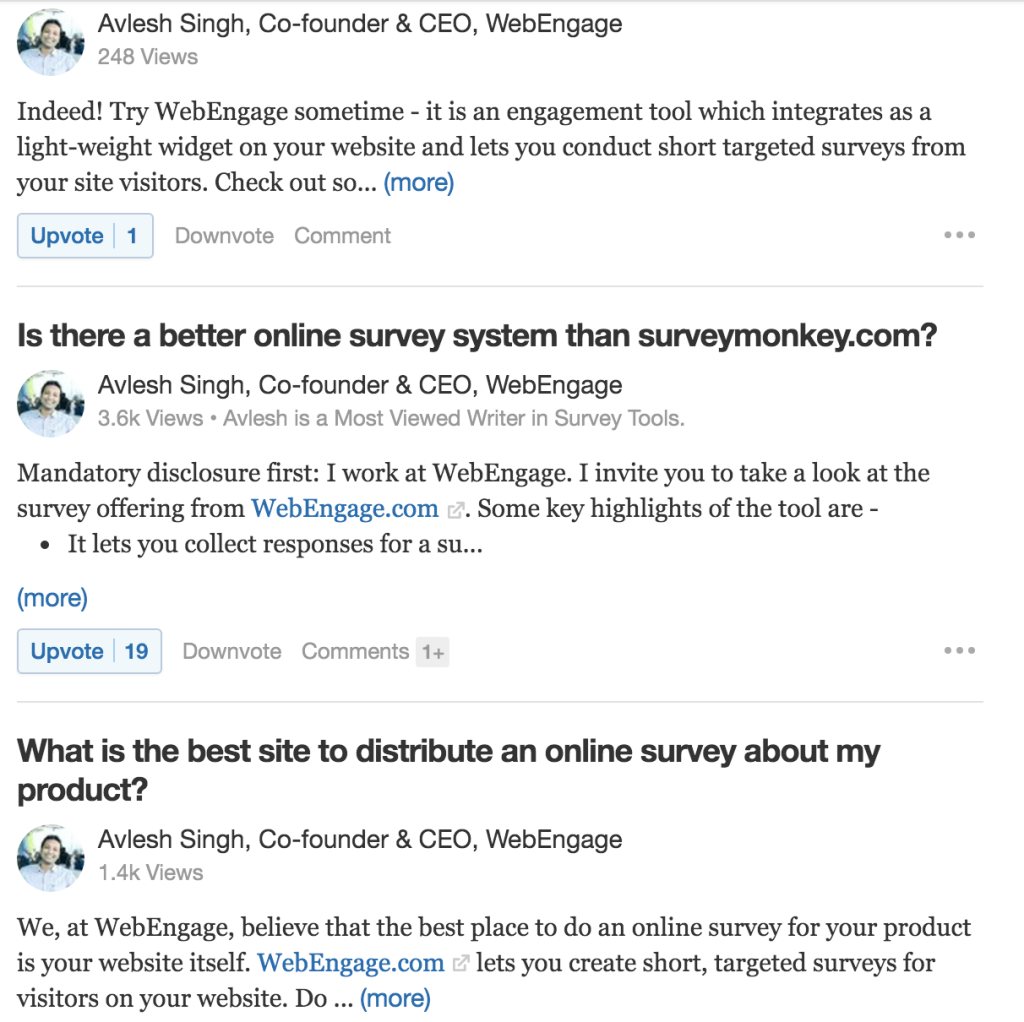“Six months in, we realized that we were selling to entirely the wrong audience.”, says Avlesh Singh, sighing. Singh and his team had built WebEngage, a tool that enabled websites to collect feedback and information from their users. But he wasn’t having an easy time marketing it to developers. It was late 2011.
“I would be speaking at developer conferences and I’d talk about the tool. I loved answering the technical questions about the tool, such as how secure the Javascript was, or how the architecture worked.” Singh and his cofounder were both developers themselves, and he had been one of the first employees at Burrp. “But we realized we were being asked the wrong sort of questions. These developers didn’t want to buy our tool. They were trying to build it themselves.”

You’d think that would be pretty bad news for a young startup, but WebEngage persisted. It changed its focus from selling to developers to selling to marketers directly. “Developer teams come in the way of marketing”, he says. “Your own dev team is the bottleneck to doing things on your own website. Ours was a marketing product, and it was plug and play, and required no code changes. It gave instant results. We decided to sell it to marketers instead.”
And it worked. From a hesitant beginning, WebEngage has come a long way, collecting feedback for websites from their consumers through forms and surveys. And while that doesn’t seem as grandiose as the missions of other startups (“we’ll change the way housing is done”), it’s quietly effective. WebEngage collects data from 300 million monthly users as it runs on 32,000 websites across the world.
These are impressive numbers for any startup, but WebEngage has a unique combination of a product that fills a need and engineers at the helm who understand marketing. Neither co-founder had any prior sales experience, so they decided to get creative.”You can’t really be spending money on marketing when you’re a young startup”, says Avlesh. In WebEnagage’s early days, he would trawl Quora for questions about tools for websites collecting feedback from users, and promote his company enthusiastically.

They managed to get some small customers quickly, but they had their sights set higher. “I had a wish-list of 15-20 enterprise customers, and we managed to convert around half of them.” MakeMyTrip was WebEngage’s first big customer, and Snapdeal and Yatra followed. This in turn helped accelerate their growth among smaller sites. “Having the big customers really helped. Everyone wants to date the hottest chick in college”, he laughs.
But it wasn’t enough to rest on your laurels. The internet evolves quickly, and the nature of customers’ interactions with websites changes with it. “The first version of WebEngage was basically the sales person who approaches you at, say Croma, while you’re shopping, and gives you unsolicited advice. You either ignore him, or at times, you engage.” Today, WebEngage has a suite of sophisticated products that give websites several means to collect data from their customers. It has aligned itself to new trends in content consumption, and its latest offering, Journeys, integrates all its functions by providing sites with a flowchart-like interface to drive user interactions.

And its approach seems to be working. Unlike most Indian startups which usually sell their products in India, WebEngage is truly international – less than half of its customers are in India, and US and the UK account for 30% of its users. Faraway Latin America accounts for 10%.
For a B2C startup, such numbers would lead to headlines, cover stories, and instant superstar status, but B2B startups are used to the obscurity. And like WebEnage’s success shows, Indian B2B startups are slowly coming of age. They’re making inroads into international markets, and away from the attention and the hype, building some solid businesses.